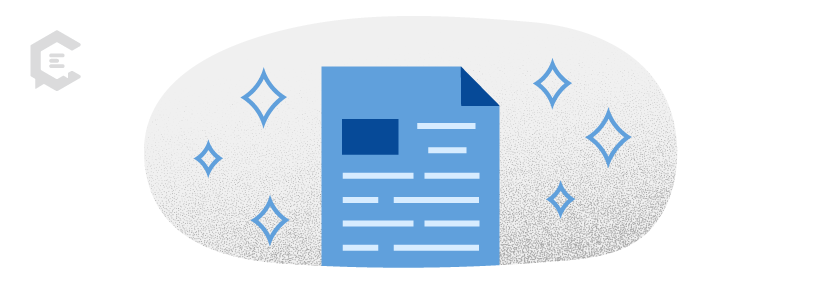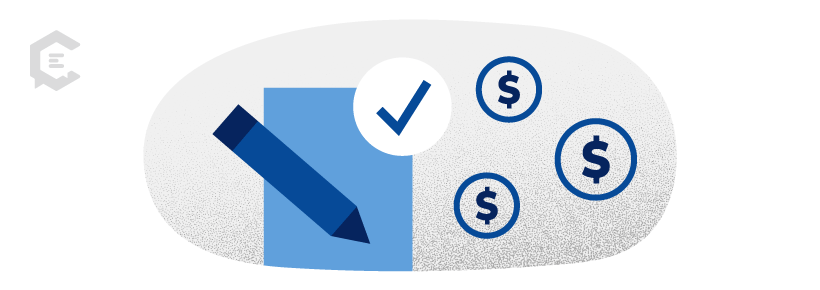Struggling to secure those freelance writing jobs you’ve been applying for? You may need a quick refresher on writing a winning proposal — your gateway to securing those exciting projects you’ve been dying to work on.
A winning proposal provides value to the client, demonstrates a deep understanding of their project and needs, shows them how you can be of service, and convinces the client they should choose you over your competitors.
But there is an art to writing a convincing proposal, and once you’ve learned it, you’ll be able to easily write brilliant proposals with confidence that bring the jobs flowing in. To help you land that next writing gig, here are our eight best tips for crafting winning freelance writing proposals.
Before You Start Writing Your Proposal
Don’t start your proposal until you’ve gained a deep understanding of who your client is, what they need, and how you can provide value to the project.
To do this, take the time to conduct thorough research on the client’s business, website, blog, and social media channels. Know their story, industry, and target audience. Identify their strengths and weaknesses and note down any ideas or suggestions you have for improvement.
Do the necessary research and you’ll clearly see where your skills and experience can be of value to the client. This will let you approach the writing part of the proposal with confidence.
8 Must-Dos for Freelance Writing Proposals
Follow these 8 tips to set your proposal up for success:
1. Give them value straight away.
You’ve just done all this incredible research on the client and their needs, so why keep it to yourself? Include value for the client in your proposal and give them a taste of what you can provide in the future. It’ll show the client that you’re committed to the project, you understand their business and its needs, and you have the expertise to provide a solution.
The solution is especially key. Ultimately, your client is posting an ad or requesting a proposal because they’re looking for a solution. Whether that’s friendlier copy that speaks to their customers, more engaging blog articles, or an email marketing campaign that actually gets click-throughs, your proposal needs to show how you can provide that specific solution.
With that in mind, note down absolutely everything you’ve considered while conducting your research and use it to prepare something of immediate value for the client. It could be anything from article topic ideas, to a content audit and suggestions, or even just general ideas and feedback.
2. Use a catchy subject line.
Sometimes the hardest part with a proposal is attracting a client in the first place. If you’ve taken the time to create something of value for the client, use that to your advantage and dangle that information in their inbox. Make use of the email subject line to show clients you’ve taken the time to prepare a custom strategy.
Rather than using a standard subject line of ‘Proposal for [Company]’ go for something striking like ‘My 7 Blog Ideas to Increase Engagement for [Company]’. This will immediately pique the client’s interest. Who doesn’t want to read ideas someone has for their business?
3. Don’t be afraid to boast.
Okay, maybe not boast, but… written an article that got 10,000 shares? Mention it. Are you super-quick with turnarounds? Tell the client. Whatever it is that makes you a fantastic writer worthy of hiring, be sure to mention it. Your client needs to know why they should be hiring you in particular, and that’s where your skill set and confidence need to shine through.
At the same time, be careful not to talk about yourself too much. While the client needs to be convinced they’re hiring an experienced professional, they ultimately want to read a proposal that’s about them (not you). A great way to handle this is to create an ‘About Me’ section. Include a link to your ClearVoice CV or portfolio to show examples of your work. List all of your achievements, notable previous clients, and skills there. Then, keep the rest of the proposal about the client.
4. Explain your process.
Your proposal should show the client exactly what deliverables they’ll be getting from you. Give them a thorough understanding of your process, timeframes, and how you work. The more information you’re able to provide here, the more convincing you’ll be to the client. Some elements you should consider including are:
- Your process for conducting competitor research, content audits, industry research, influencer research, image mood boards, and anything else that you typically provide.
- If and how you intend on measuring your success through analytics, KPIs, clicks, or other metrics.
- The quantity of your work—whether that’s how many articles you intend to deliver per week (or month) or how many emails you’ll write for the quoted cost.
- What’s involved in your content calendar creation process and how often your calendar will be refreshed.
- Whether or not you source your own imagery, upload blog articles to WordPress, etc.
Here’s where you can also add some fancy tables and charts. A deliverables chart with timelines works brilliantly in securing proposals and shows clients exactly what they can expect from you.
You can set your deliverables chart out as such:
- Week 1 – Content strategy delivered via Google Docs.
- Week 2 – 1000-word blog article and image sourcing via Pexels.
- Week 3 – Incorporate client notes and execute revisions.
- And so on for the remainder of your planned engagement.
5. Talk business.
Continuing on from your process, a convincing proposal would also include operational guidelines regarding communication and your general business structure. All of this information will help the client see if you are a good fit for them, as well as show that you’re serious about how you run your business. Consider including:
- How you would like to communicate with the client (Slack, Email, Zoom, etc.).
- How frequently you’d like to communicate.
- If you use task management systems (and if so, what they are).
- If you intend to schedule regular brainstorming or strategy sessions.
- What your preferred working hours are.
- How many revisions a client gets for each article.
- If you require a deposit to get started.
To can even have a standard contract terms document for yourself and attach it to ensure there are no misunderstandings. That way, all of your important conditions are covered, and when the client signs the proposal, they can also sign the contract so you can get going straight away. A tool like Fiverr Workspace can help with this—providing a standard freelance contract template and e-signing to move things along faster. Plus, it’ll automatically set up a new client, project, and invoice for you if you win the pitch, so you can get going on tracking tasks and time, and you won’t forget to invoice the client when the time comes.
6. Make it pretty.
As a writer, you know that people don’t want to read big, long walls of text when it comes to articles. Proposals are no different. Make your proposal attractive to the client at first glance with a neat, organized layout, with clear headings and an aesthetically-pleasing design. This not only makes you look more professional but also demonstrates the pride you take in your work.
7. Offer a freebie.
You don’t necessarily have to give a discount on your services, but freebies or in-kind offers are often used as part of a proposal to make you a more attractive candidate to the client initially.
Typically this would involve adding on extra services at no cost to the client, giving them extra value for money with the project. As a freelance writer, freebies you can offer include sourcing images, uploading articles to WordPress, writing social media posts to promote content, and so on.
8. Follow up.
The process isn’t over once you hit send. Schedule some time in your calendar or via an email reminder service like Mailchimp so you don’t forget to follow up. Keep it friendly and professional to stay top of mind and show that you’re available should the client have any questions. It could be what closes the deal.
It’s Worth the Effort
If all of this sounds like a lot of work, that’s because writing a winning proposal does take a lot of effort. But going the extra mile means playing the long game. You’ll eventually win more jobs, which means you won’t have to create as many proposals in order to keep your client pipeline healthy. As you build up your portfolio, you’ll be able to increasingly go after the clients that really excite you — and certainly, that’s worth the extra effort.
And if you want to supercharge your freelance writing career, join our Talent Network. We’ll match you with top brands that meet your skill set and expertise to give you a boost.







